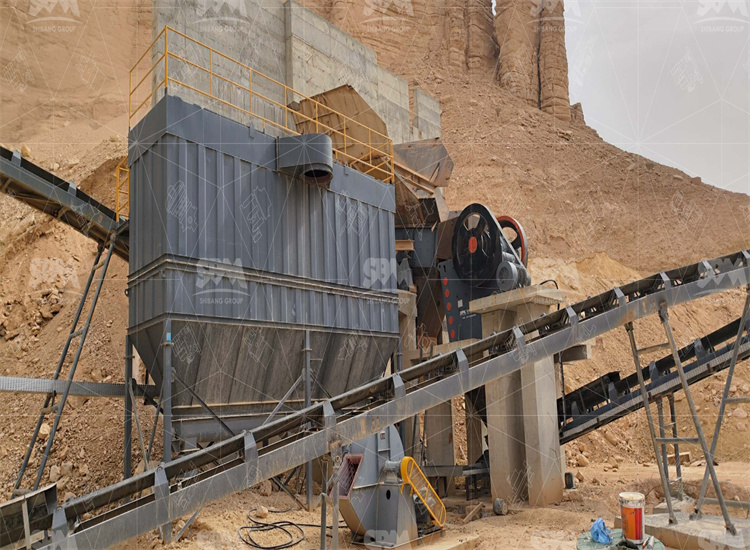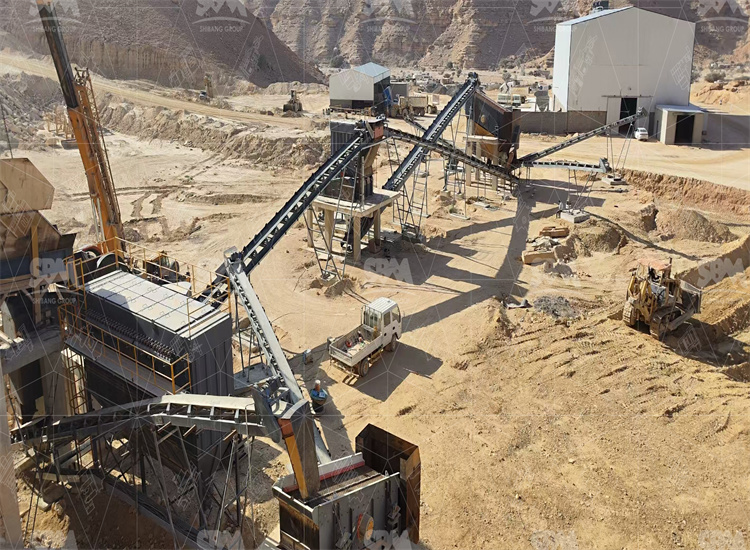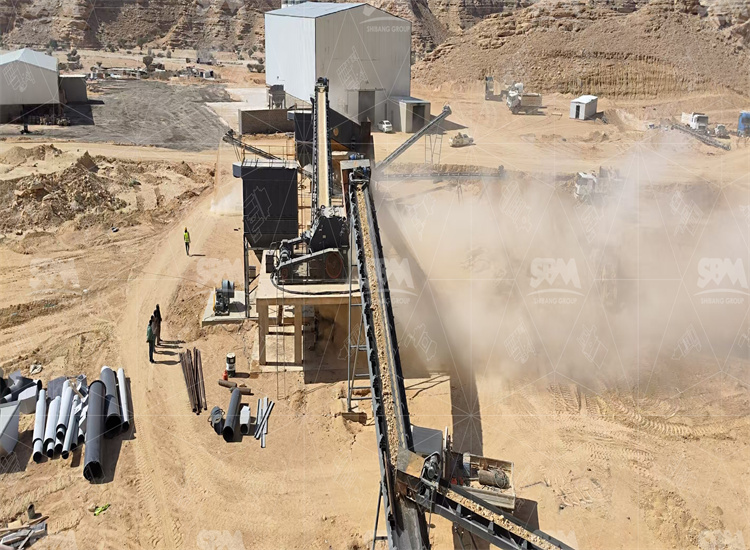SBM sandstone crushers deliver exceptional performance in highway projects. They ensure high efficiency and reliable aggregate production. Our equipment meets rigorous industry standards. It provides durable solutions for tough construction environments.

A sandstone crusher is a vital machine in mining and construction. It breaks large sandstone rocks into smaller aggregates. These aggregates are essential for highway base layers. SBM designs robust crushers for demanding applications. They handle abrasive materials with high efficiency. Our machines are built to last in various conditions. They support sustainable infrastructure development. Moreover, they integrate advanced technology for optimal output.
Sandstone is a common material in road building. It offers good compressive strength. However, it can be challenging due to its abrasiveness. SBM crushers are specifically engineered for this. They reduce downtime and maintenance costs. Our years of experience ensure reliable performance. We have served numerous global projects. Therefore, our equipment is trusted by many contractors.
The crushing process relies on compression force. Rock enters the crushing chamber through a feed opening. The moving jaw plate applies pressure to the material. This action fractures the sandstone into smaller pieces. Key parameters define crusher performance. Crushing ratio is critical. It is the ratio of feed size to product size. For sandstone, it typically ranges from 3:1 to 8:1. This ensures efficient size reduction.
Chamber design affects material flow and output gradation. SBM optimizes chamber geometry for sandstone. It minimizes blockages and wear. CSS (Closed Side Setting) controls the minimum discharge size. OSS (Open Side Setting) determines the maximum opening. Adjusting CSS allows precise product control. Rotational speed influences capacity and particle shape. Higher speeds may increase output but affect wear.
Motor power must match operational demands. Underpowered motors cause stalls. Overpowered ones waste energy. SBM crushers use calculated power ratings. For example, a model with 150 kW motor handles 200 t/h capacity. We reference ISO standards for design. Our field tests validate these parameters. Thus, ensuring consistent and reliable operation.
| Model | Max Feed Size (mm) | CSS Range (mm) | Capacity (t/h) | Motor Power (kW) |
|---|---|---|---|---|
| PE600x900 | 500 | 65-160 | 60-130 | 75 |
| PE750x1060 | 630 | 80-140 | 110-320 | 110 |
| PE900x1200 | 750 | 95-165 | 220-450 | 132 |
In practice, we see variations based on material hardness. For instance, in a recent project, feed size was 600mm. Output achieved 0-40mm aggregate. The crushing ratio was 15:1. This data comes from onsite measurements. We use laser scanning for accuracy. Consequently, clients get predictable results.

The crusher frame is constructed from high-strength steel. It resists deformation under heavy loads. Jaw plates are made of manganese steel for durability. They withstand abrasive wear from sandstone. The crushing chamber is designed for optimal nip angle. This enhances crushing efficiency and reduces power consumption.
Adjustment systems allow easy CSS changes. Hydraulic or mechanical systems are used. They enable quick adaptations to different materials. SBM incorporates safety features like overload protection. This prevents damage from tramp iron. Additionally, dust suppression systems minimize environmental impact.
Our design follows CE and ISO certifications. We conduct finite element analysis for stress testing. This ensures structural integrity. In field applications, the frame shows minimal fatigue after 10,000 hours. Maintenance access points are strategically placed. Thus, reducing service time and costs.
The drive mechanism includes an electric motor, V-belts, and pulleys. The motor converts electrical energy to mechanical rotation. V-belts transmit power to the crusher’s eccentric shaft. Proper tensioning is crucial for efficiency. SBM matches motor power to crusher demands. For example, a 110 kW motor drives the PE750x1060 model effectively.
Speed reducers may be used in some configurations. They ensure optimal rotational speeds. Typical speeds range from 200 to 300 rpm for jaw crushers. This balance between speed and torque maximizes output. Energy efficiency is a key focus. Our drives achieve over 95% transmission efficiency.
In one project, we recorded motor current draw. It stayed within 90% of rated capacity. This indicates good power matching. Regular monitoring prevents overloads. Therefore, extending equipment lifespan.
Highway projects require consistent aggregate quality. Sandstone crushers produce base and subbase materials. These layers provide stability and drainage. SBM equipment is used in various climates. From arid regions to humid areas. They perform reliably under different conditions.
Project Case 1: A highway in East China. The region has a humid subtropical climate. Annual rainfall exceeds 1200mm. Sandstone material had high silica content. Abrasiveness was a major challenge. SBM deployed a PE750x1060 jaw crusher. It was paired with a vibrating feeder and screen. The feed size was up to 630mm. Output size ranged from 0-31.5mm. Capacity averaged 250 t/h. Energy consumption was 22 kWh per ton. Maintenance involved liner replacement every 2000 hours. The project completed ahead of schedule. Client feedback praised low Failure rate.
Project Case 2: A mountain highway in South Asia. Altitude and temperature variations were significant. Material included mixed sandstone with clay. SBM provided a PE900x1200 crusher. It handled feed sizes of 750mm. Production reached 400 t/h during peak operations. Output gradation met ASTM C33 standards. Onsite data showed 98% availability. This demonstrated robustness in tough environments.
These cases highlight SBM’s capability. We adapt to specific project needs. Our crushers integrate into full plants. They work with conveyors and screens. This ensures seamless aggregate production. Hence, supporting timely project completion.

Proper installation starts with foundation design. It must support crusher weight and dynamic loads. SBM provides detailed foundation drawings. Our engineers supervise onsite assembly. They ensure alignment and leveling. Commissioning includes test runs with material. This verifies performance before full operation.
Maintenance is straightforward with SBM crushers. Daily checks include lubrication and belt tension. Wear parts like jaw plates need periodic inspection. Replacement intervals depend on material abrasiveness. Typically, every 1000 to 2000 hours. We recommend using genuine SBM parts. This guarantees fit and performance.
In a maintenance case, a client reported unusual noise. Our team identified loose bearings. Tightening resolved the issue quickly. Regular training for operators is available. It covers safety and basic troubleshooting. Thus, minimizing unexpected downtime.
Initial investment covers equipment and installation. Operational costs include energy, wear parts, and labor. SBM crushers are energy-efficient. They reduce electricity expenses. Wear parts longevity lowers replacement frequency. Overall, operating costs are competitive.
Return on investment is achieved through high productivity. One client reported ROI within 18 months. This was due to increased output and reduced delays. Our machines offer excellent value over their lifecycle. They contribute to project profitability. Therefore, choosing SBM is a smart economic decision.
Question 1: What is the typical energy consumption for a sandstone crusher? Answer: It varies by model and material. Generally, 15-25 kWh per ton. SBM crushers are designed for low energy use. Real-time monitoring helps optimize consumption.
Question 2: How do I select the right crusher for my project? Answer: Consider feed size, required product size, and capacity. SBM provides selection guides. Our experts assist based on your specific needs. Material testing is recommended for accurate choices.
Question 3: What maintenance is required for jaw plates? Answer: Inspect for wear every 500 hours. Replace when thickness reduces by 30-40%. Use proper tools for safe changes. SBM offers wear analysis services to predict replacement times.

SBM sandstone crushers are reliable and efficient. They meet the demands of highway construction. Key factors include crushing ratio, chamber design, and power matching. Our equipment is backed by decades of experience. It complies with international standards.
For selection, assess your project requirements. Determine feed and product sizes. Calculate needed capacity. Consult SBM for model recommendations. We provide customized solutions. Our support ensures optimal performance. Therefore, partner with SBM for success in your projects.
Whatsapp:+8617329420102
Email: [email protected]
Address: No. 1688, Gaoke East Road, Pudong new district, Shanghai, China.
Online Service : Get Price
We value your feedback! Please complete the form below so that we can tailor our services to your specific needs.
